Το 25% των παιδιών στην Ευρώπη εμφανίζει
κάποια αλλεργική πάθηση. Είναι λοιπόν πιθανόν, η πάθηση αυτή να
εκδηλώσει τα συμπτώματά της, στο σχολικό περιβάλλον. Κατά τη διάρκεια
της σχολικής χρονιάς 1 στα 10 παιδιά θα παρουσιάσει ασθματική κρίση, ενώ
4-7% των παιδιών παρουσιάζουν τροφική αλλεργία. Σοβαρές αντιδράσεις
τροφικής αλλεργίας μπορεί να συμβούν για πρώτη φορά στο σχολείο, με το
20% όλων των αλλεργικών τροφικών αντιδράσεων να συμβαίνει στο ίδιο
περιβάλλον.
Τα αλλεργικά συμπτώματα που μπορεί να εμφανίσουν στο σχολείο μπορεί
να είναι από πολύ ήπια, όπως,- περιστασιακά φτερνίσματα και φαγούρα στη
μύτη, έως πολύ σοβαρά κα απειλητικά για τη ζωή τους, όπως ασθματικές
κρίσεις ή αναφυλακτικές αντιδράσεις. Τα 2/3 των σχολείων έχουν ένα
τουλάχιστον παιδί σε κίνδυνο να εμφανίσει αναφυλαξία. Το 15% των παιδιών
στην ηλικία των 14 ετών έχουν διαγνωστεί με 2 ή περισσότερες
αλλεργικές νόσους, όπως άσθμα, έκζεμα, αλλεργική ρινίτιδα. Η συνύπαρξη
άσθματος, αποτελεί παράγοντα κινδύνου για σοβαρότερες αντιδράσεις σε
παιδιά με τροφική αλλεργία.
Οι αλλεργικές παθήσεις σε ένα παιδί σχολικής ηλικίας, τις
περισσότερες φορές, αποτελούν πηγή γέννησης διαφόρων προβλημάτων για τον
πάσχοντα στο απαιτητικό σχολικό περιβάλλον.
Προετοιμαστείτε εγκαίρως!
Ενημερωθείτε σωστά, οργανώστε με
τον γιατρό σας ένα γραπτό σχέδιο δράσης σε περίπτωση ανάγκης για το
παιδί σας και επικοινωνήστε το πρόβλημά σας εγκαίρως στο σχολείο.
Ασφαλές περιβάλλον στο σχολείο σημαίνει θετική ψυχολογία και
αυτοπεποίθηση παιδιών-γονέων-εκπαιδευτικών.
Set Up a Meeting at the School
When your child has serious allergies, work with her school. Meet with the principal, her
teachers, and the clinic staff. Find out if the school already has a
policy to deal with food or other allergies. Then, make a plan to help
her avoid triggers while still being able to fully take part. Don’t
forget after-school programs and the school bus.
Develop an Anaphylaxis Action Plan
In an allergy emergency, seconds count. Every child with prescribed epinephrine should
have an emergency plan. Make one with your child’s doctor and the
school nurse. It should have your child’s photo, specific allergy
warning signs and symptoms, and treatment instructions. Put copies in
your child’s classroom, the office, and the cafeteria.
Supply the School With Medication
Epinephrine should
be with your child at school -- not locked up or refrigerated. It should
be passed between staff wherever she goes unless she’s old enough to
carry it. Explain doctor instructions, which may include injecting at
the first signs of anaphylaxis. Caution that they should not wait, even
if it is unclear that the symptoms are allergy related. Your doctor may
suggest that your child carry two doses. Check expiration dates often.
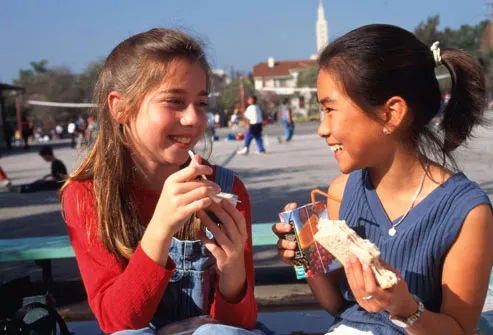
Talk to Your Child About Allergies
Go over your
child’s triggers with her. For food allergies, tell her not to share
food, utensils, or containers, and to wash her hands before and after
eating. For insect sting allergies, teach her to wear long sleeves,
pants, and shoes outside and eat inside when she can. If outside, use a
straw. Then she can’t swallow a bee if it is in her drink.
Το παιδί με τροφική αλλεργία στο σχολείο
4-7% των παιδιών σχολικής ηλικίας παρουσιάζουν τροφική αλλεργία (
εξανθήματα σε όλο το σώμα, ‘πρηξίματα’, έμετοι, διάρροιες, κ.ά) και 20%
των αντιδράσεων αυτών συμβαίνουν στο σχολικό περιβάλλον. Γάλα, αυγό,
σιτηρά, ξηροί καρποί, ψάρι και θαλασσινά είναι τα συχνότερα τροφικά
αλλεργιογόνα.
Επειδή δεν μπορεί να προβλεφθεί η βαρύτητα της αντίδρασης, οι
εκπαιδευτικοί θα πρέπει να είναι εκπαιδευμένοι στην αναγνώριση των
συμπτωμάτων και την άμεση και σωστή αντιμετώπιση.
Το πρόβλημα βέβαια δεν είναι τόσο έντονο στη χώρα μας όσο σε χώρες με
σχολικό εστιατόριο. Παρόλα αυτά, το πρόβλημα παραμένει υπαρκτό στους
παιδικούς σταθμούς όπου καθημερινά προετοιμάζονται γεύματα και ταΐζονται
μικρά παιδιά. Οι γονείς μπορούν να έχουν άμεσο έλεγχο του
κολατσιού που θα δώσουν στο παιδί, αλλά και να το συμβουλεύσουν για το
τι μπορεί να αγοράσει από το κυλικείο.
Προστατεύω το παιδί με τροφική αλλεργία σημαίνει εκπαιδεύω το παιδί και το περιβάλλον του, ώστε:
- να κατανοήσει τη σοβαρότητα του προβλήματος,
- να ενημερωθεί αναλυτικά για τις τροφές στις οποίες έχει αλλεργία,
- να διαβάζει τα συστατικά στις ετικέτες όλων των έτοιμων τροφών,
- να μην ανταλλάσει και να μη μοιράζεται τρόφιμα με τους συμμαθητές,
- να μη μαζεύει και να μην παίζει με υπολείμματα τροφών,
- να πλένει πάντα τα χέρια του με σαπούνι, πριν και μετά το φαγητό
- Να ετοιμάζεται από την οικογένεια φαγητό από το σπίτι, όταν δεν
είναι δυνατόν να καθορίζεται ακριβώς η σύσταση και τα περιεχόμενα των
τροφίμων που παρέχονται από τα σχολικά κυλικεία.
Children and school staff (even substitute teachers and lunch monitors) should know to watch for these warning signs:
- Hives and itching, pale or flushed skin
- Swollen throat or tongue
- Wheezing, trouble breathing or swallowing
- Dizziness or fainting, or rapid or weak pulse
- Vomiting, diarrhea, or stomach cramps
Make a Response Plan
School staff should
not expect your child to give herself an epinephrine shot during a
reaction, even if she knows how. Your doctor will make an emergency
response plan for staff to follow. It will tell them how and when to
give epinephrine, call 911 (112), and start emergency first aid.
Expose Hidden Severe Allergy Dangers
Ask your child's teacher to avoid using triggers in lesson plans, crafts projects, and cooking classes. Some iffy items include:
- Tempera paints that have eggs
- Clay or dough made with peanut butter
- Icing made from egg whites
Also establish
clear communication regarding class parties and events in which food
items are brought in. Request a list of ingredients prior to these
events. Then decide with your child if it's safer to pack her a treat
from home.
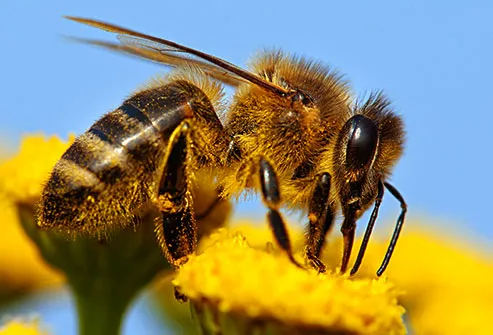
Work for Sting Prevention
Preventing insect stings can be hard. But your child's school can take these helpful steps:
- Remove insect nests on or near school grounds
- Store garbage in covered containers away from where students play or line up for school
- Have at-risk students eat inside, at least during sting season
-
Αλλεργικές αντιδράσεις σε μέλισσα και σφήκα συμβαίνουν σπάνια στο
σχολικό περιβάλλον. Παρόλα αυτά, επειδή μπορεί να αποτελέσει ένα πολύ
επείγον πρόβλημα, θα πρέπει οι εκπαιδευτικοί να είναι ενημερωμένοι για
την οντότητα αυτή και την αντιμετώπισή της. Πολύ σημαντική η εξοικίωση
των εκπαιδευτικών με την αυτοενιέμενη ένεση αδρεναλίνης, αλλά και με τις
οδηγίες για το πότε θα πρέπει να χορηγηθεί όπως και για τα υπόλοιπα
φάρμακα αντιμετώπισης του οξέος επεισοδίου.
Τα παιδιά με γνωστή αλλεργία σε Υμενόπτερα θα
πρέπει να τηρούν κάποιους κανόνες όταν βρίσκονται σε εξωτερικό
περιβάλλον ( π.χ. στο προαύλιο του σχολείου, στην εκδρομή με το
σχολείο):
- να αποφεύγουν τα γλυκά και να μην πίνουν αναψυκτικά & χυμούς (
διότι οι γλυκαντικές ουσίες που περιέχουν προσελκύουν αυτά τα έντομα)
σε εξωτερικούς χώρους
- να φορούν πάντα παπούτσια,
- να μη φορούν ρούχα ανοιχτόχρωμα με έντονα χρώματα,
- να μη χρησιμοποιούν αρώματα,
- να αποφεύγουν τις συναθροίσεις κοντά σε πηγές, τρεχούμενα ή στάσιμα νερά, και κάδους σκουπιδιών,
- να φέρουν πάντα μαζί τους το set αντιμετώπισης αναφυλαξίας και
φυσικά μέσα σε αυτό την αυτοενιέμενη αδρεναλίνη και να ξέρουν να τη
χρησιμοποιούν.
Give Your Child a Medical ID Bracelet
A medical alert
bracelet reminds school staff during an emergency that your child needs
epinephrine. It also gives paramedics a special number to get important
information quickly. Bracelets designed for kids can feature beads or
cartoon characters.
Should You Bag Cafeteria Lunches?
If you’re sure your
child won’t swap food, packing a lunch is OK. But schools must make
meals for kids with special diet needs at no extra cost. Food staff
should know your child’s food triggers and the technical and scientific
names for those foods to help them when reading packages. Surfaces and
utensils should be washed to avoid cross contact.
No-Allergen Zones
Limiting contact
with triggers can be done in a way that doesn't make kids with food allergies feel alone. If your child is allergic to nuts, for example,
work with school staff to:
- Have a special lunch table where anyone can sit whose lunch is nut-free
- Make school-wide rules not to trade food or share utensils or straws
- Create a nut-free snack policy in the classroom
Help the School Help Your Child
By volunteering at
school, you can help teachers watch what's going on. Be involved in
planning and going on field trips and class parties. Write a letter that
the teacher can send to other class parents to let them know about your
child’s allergy. Offer to provide kid-friendly allergy info for
classmates.
SOURCES:WebMD , allergikos.gr , AAP , ΕΠΕ
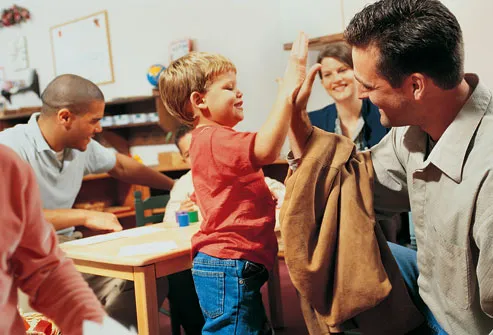


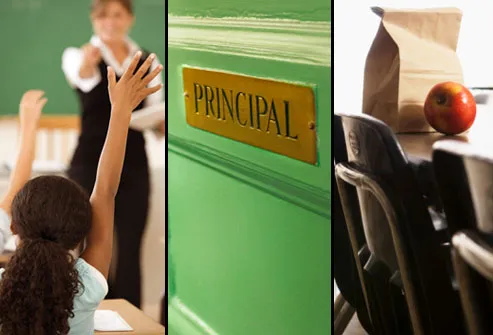
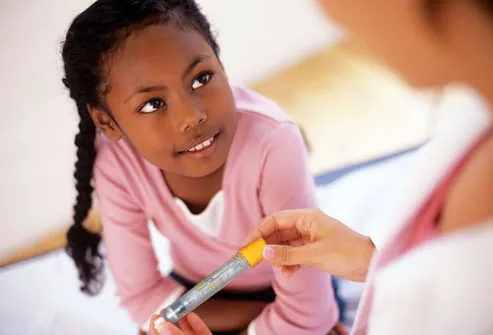

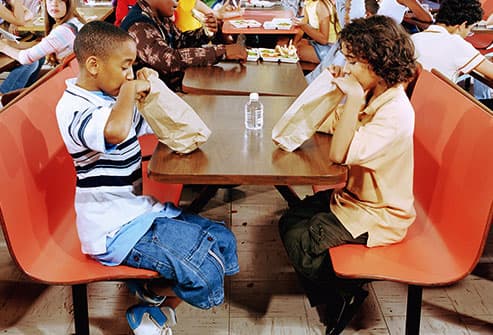

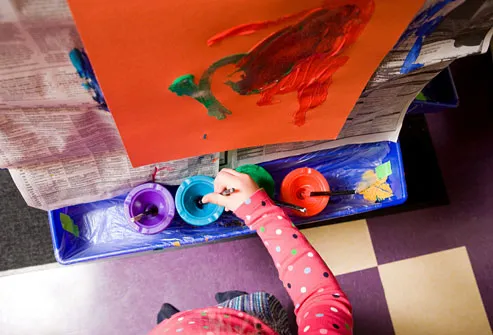

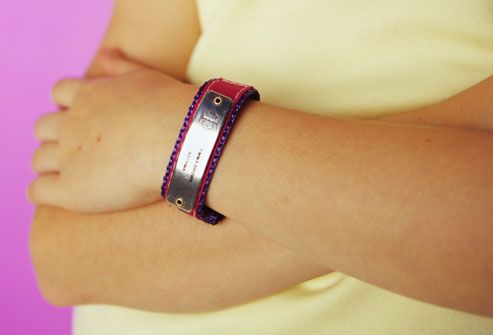




Δεν υπάρχουν σχόλια:
Δημοσίευση σχολίου